Lambay Island is home to Ireland's wallabies
- Published
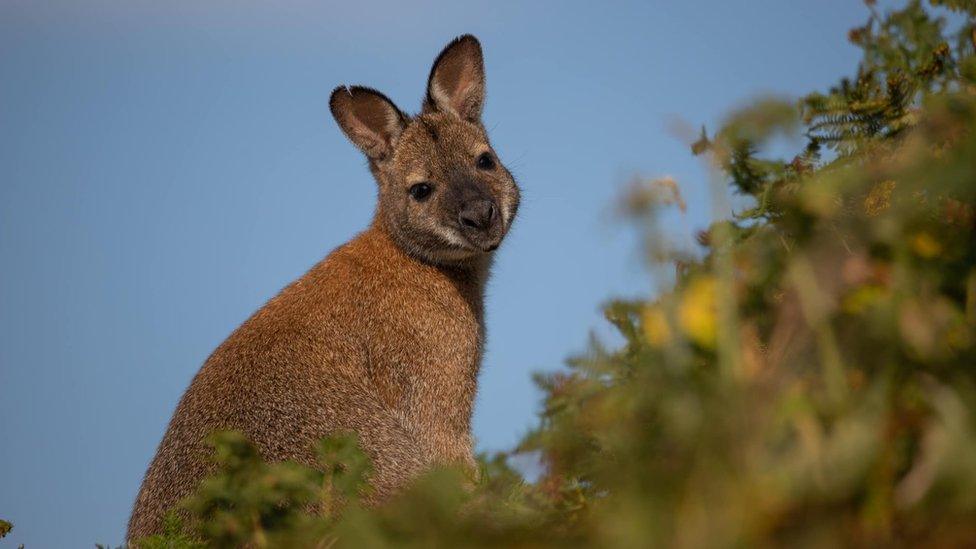
Lambay Island is home to dozens of wallabies
For a few days in August wallabies hit the headlines in Northern Ireland after what was dubbed the "great escape' in County Tyrone.
Winnie the wallaby escaped her enclosure at Glenpark Estate near Omagh by jumping over a fence.
She was reunited with the estate's other wallaby, Jeffrey, four days later after being found a short distance away.
In the few days she was missing, there was much discussion about how well an animal native to Australia could survive in the wild in Northern Ireland.
However, Ireland has had a population of wild breeding wallabies for several decades.
Their story includes a large private island and an international banking family.
'Myth like the leprechauns'
Lambay Island, in the Irish Sea off the coast of County Dublin, has been owned by the Baring family since 1904.
Rupert Baring introduced the first wallabies to the island in the 1950s, but the population really took off after seven more were shipped over from Dublin Zoo who had a surplus of the marsupials in the 1980s.
The red-necked wallabies began to breed and currently their numbers are estimated to be anywhere from 60 to somewhere in the hundreds.
Eamon McGrattan is a tour guide based in Malahide, north of Dublin, who takes walking tours to the island.
"Some people don't know they're there and are very surprised, others think it's a myth like the leprechauns and the fairies," he says.
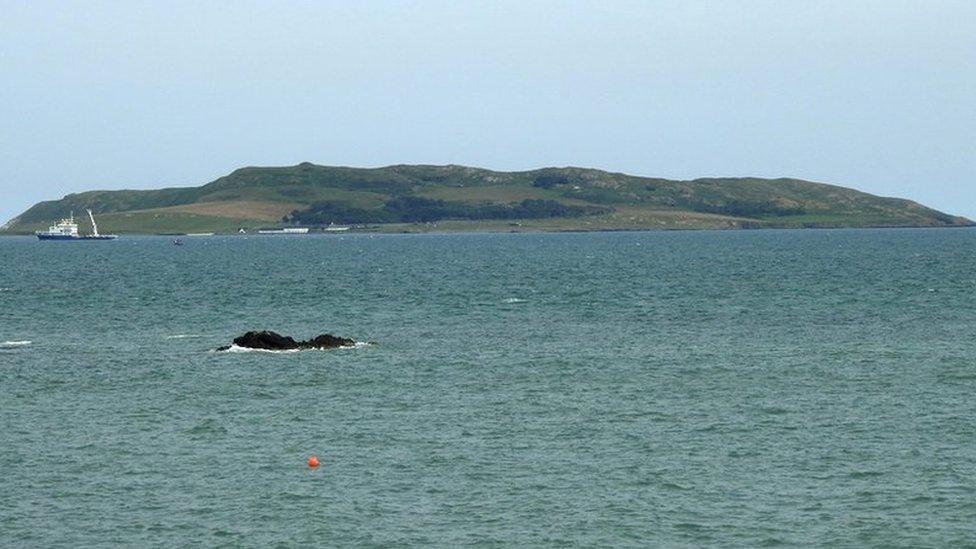
The island lies off the coast of County Dublin
The wallaby population predominately graze the 600-acre island's grassland, although this is sometimes supplemented by hay and silage in the winter.
They shelter in the gorse thickets on the hill and Mr McGrattan says they can be hard to spot.
"You'd expect to see them but they are nocturnal animals," he says.
"And the other thing is in good weather and bad weather they tend to lie low and you don't see as much of them.
"In the good weather during the summer, it was gradual, we saw less and less of them each day, then there was one tour where we didn't see any.
"But that's just the luck of the draw. People probably think they'll get a bit closer than they do."
'Mob' mentality
While the species is clearly not native to Ireland, the Republic's National Biodiversity Data Centre, which monitors invasive species says "it is extremely unlikely this population could expand to the mainland".
"They are a reproducing population but they're confined to there with it being an island," the centre's Colette O'Flynn said.
"We have recently had an unverified report of somebody introducing them to a private island down off the south east, but they're not known to occur anywhere else in Ireland."
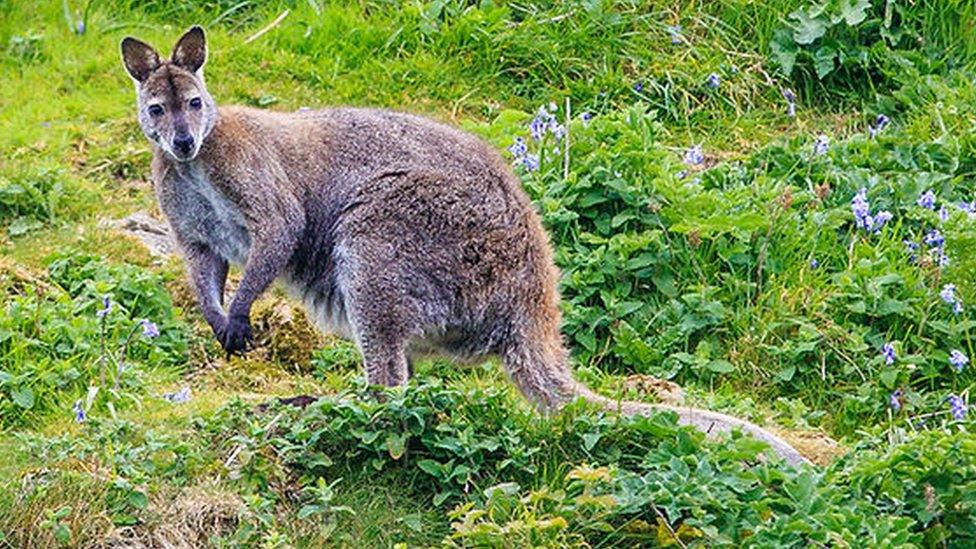
The wallaby population predominately graze the 600-acre island's grassland
The wallabies are much smaller and less aggressive than kangaroos, with males growing to 1.5m (5ft) in length from tip to tail and weighing up to about 21kg (3st).
"My relationship with the island started in 2013 and before that I had been fishing around it and I would have occasionally seen them," Mr McGrattan says.
"They do move fast along rough terrain, they're very balanced, hopping on two legs with the long tail."
The wallabies stay in groups known as mobs.
"You might see them in groups of about 12 and you might see several groups of 12," Mr McGrattan says.
"But you wouldn't see a herd of them as such."
The tour guide says the animals have ways of coping with the worst of the Irish cold.
"They reckon during the cold spell that we had - the Beast from the East [of 2018] - that they huddled together like penguins to keep warm."
Lambay is also home to fallow deer and a large variety of bird life.
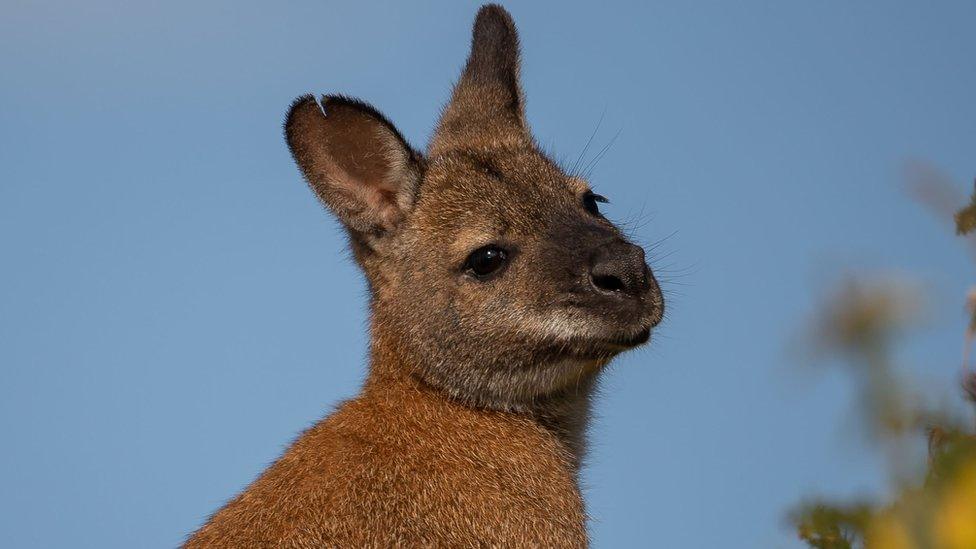
Locals rather than tourists tend to visit the island to catch a glimpse of the wallabies
Mr McGrattan says awareness of the island is now spreading.
However, he says the majority of visitors he takes to the island are from Ireland.
"Internationally it's smaller because when people come to Dublin they're probably going to tick the big boxes, the Guinness storehouse, the bigger attractions," he says.
"Whereas Lambay, you've to work round the weather and everything else.
"The biggest group (of visitors) is probably locals because they're looking at the island and it's a mystery.
"Being a private island there's a curiosity, people want to see what's on the other side of the wall."
Related topics
- Published25 August 2022
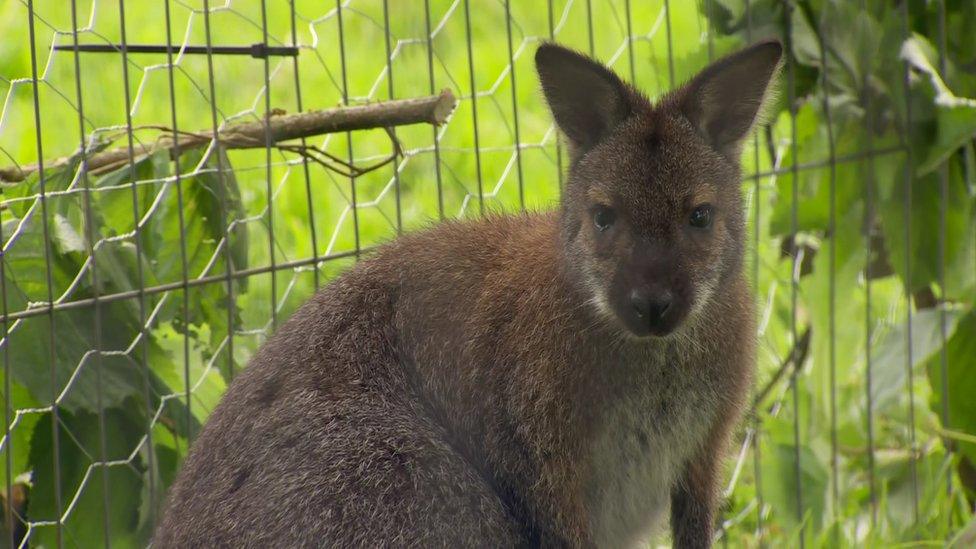
- Published8 February 2022
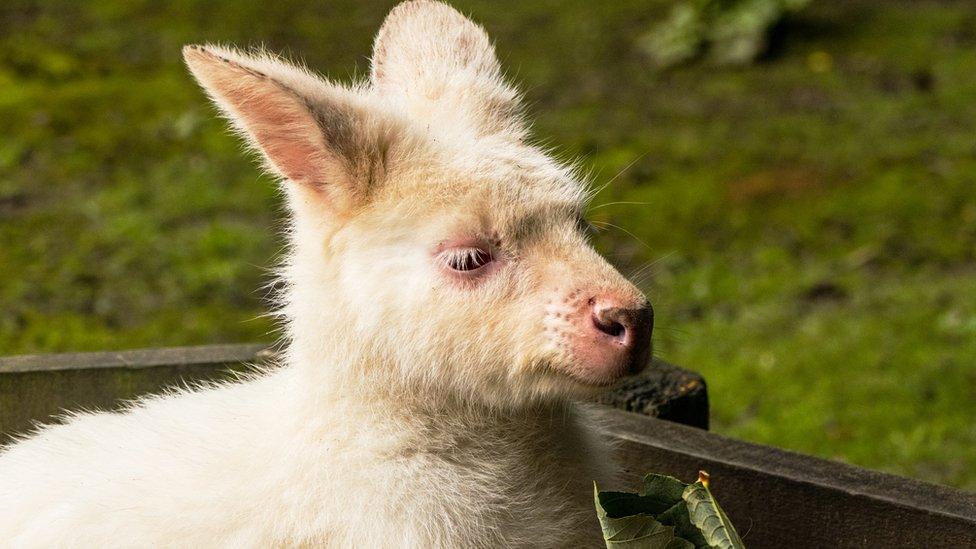
- Published15 April 2022
